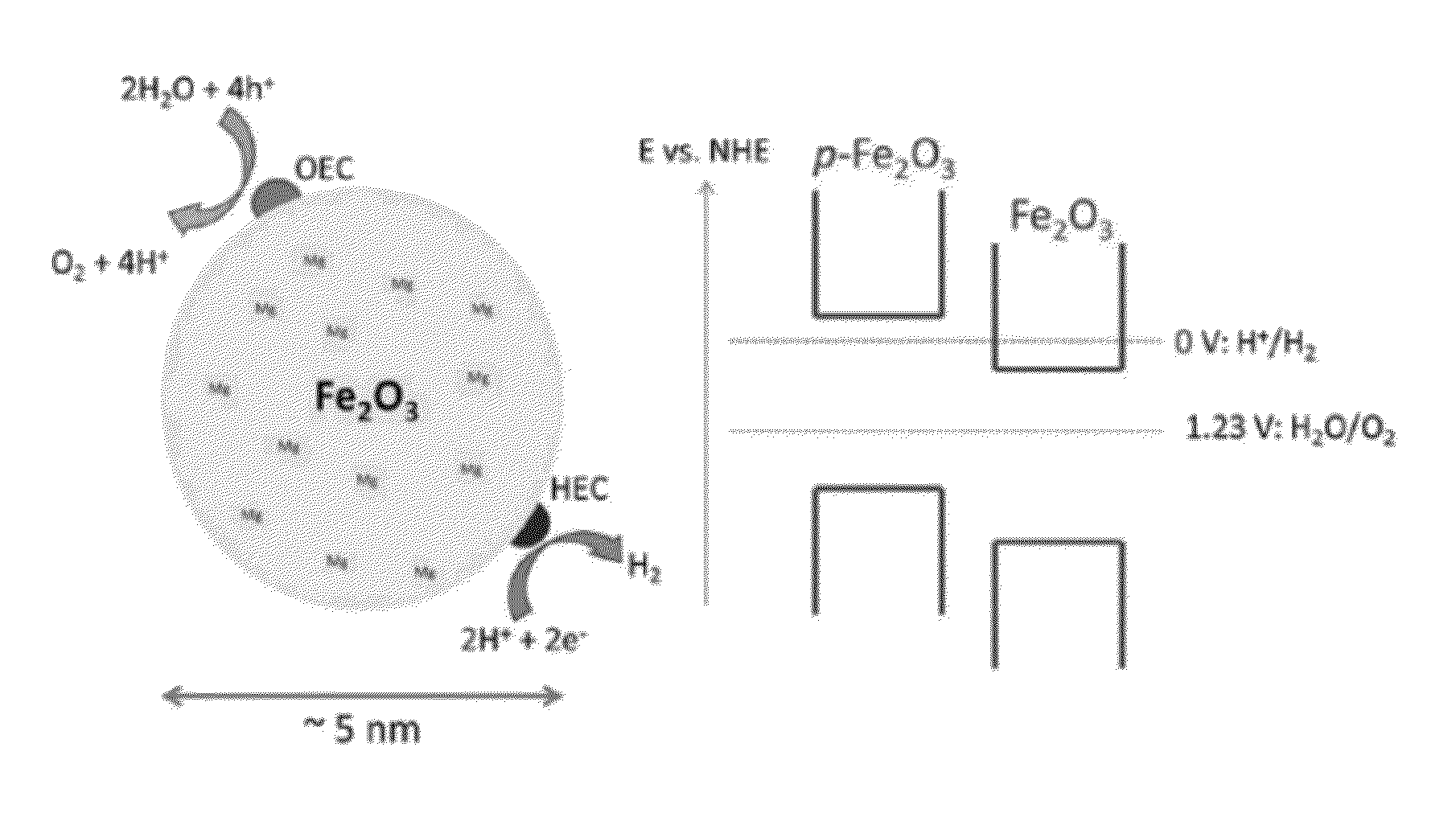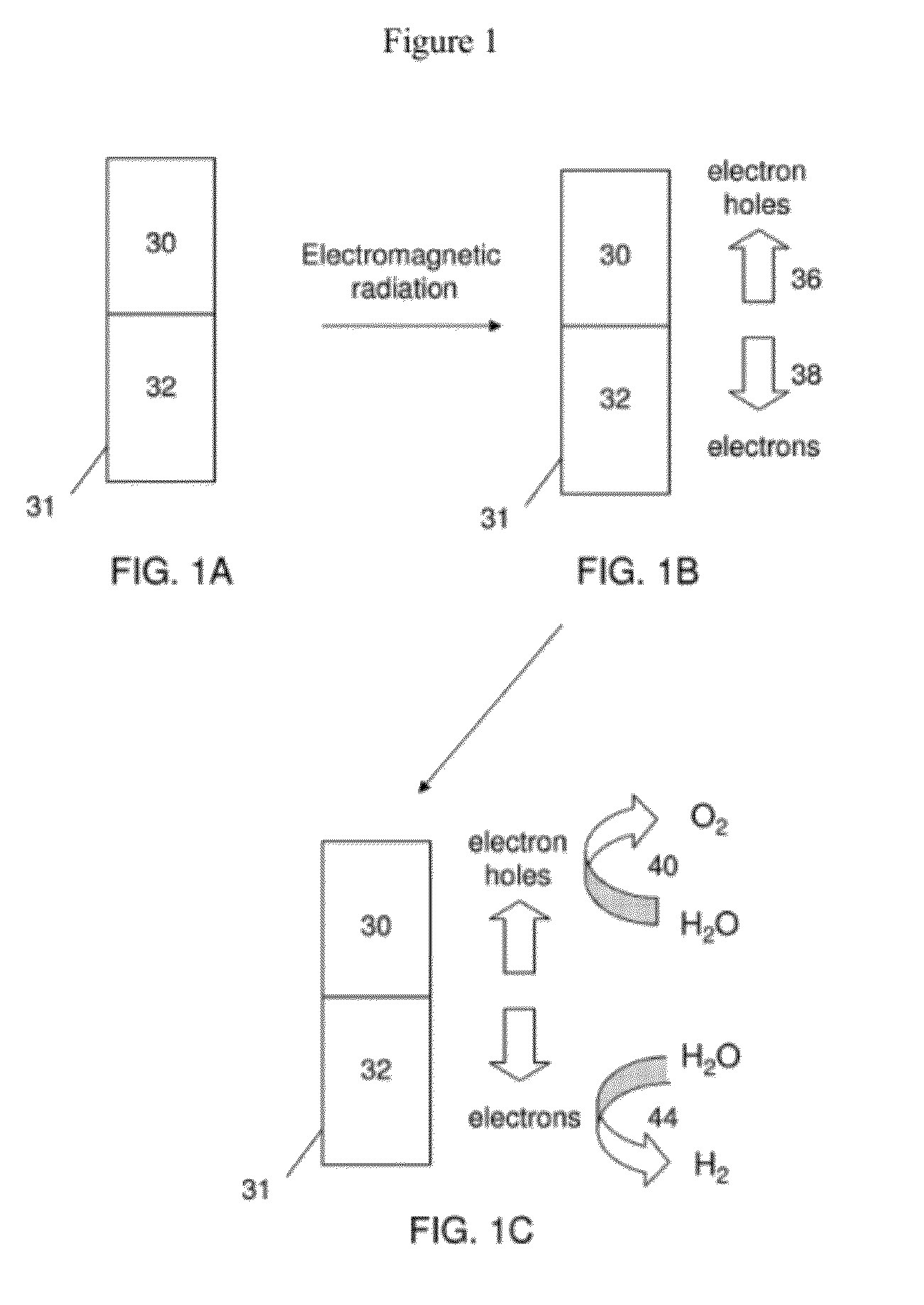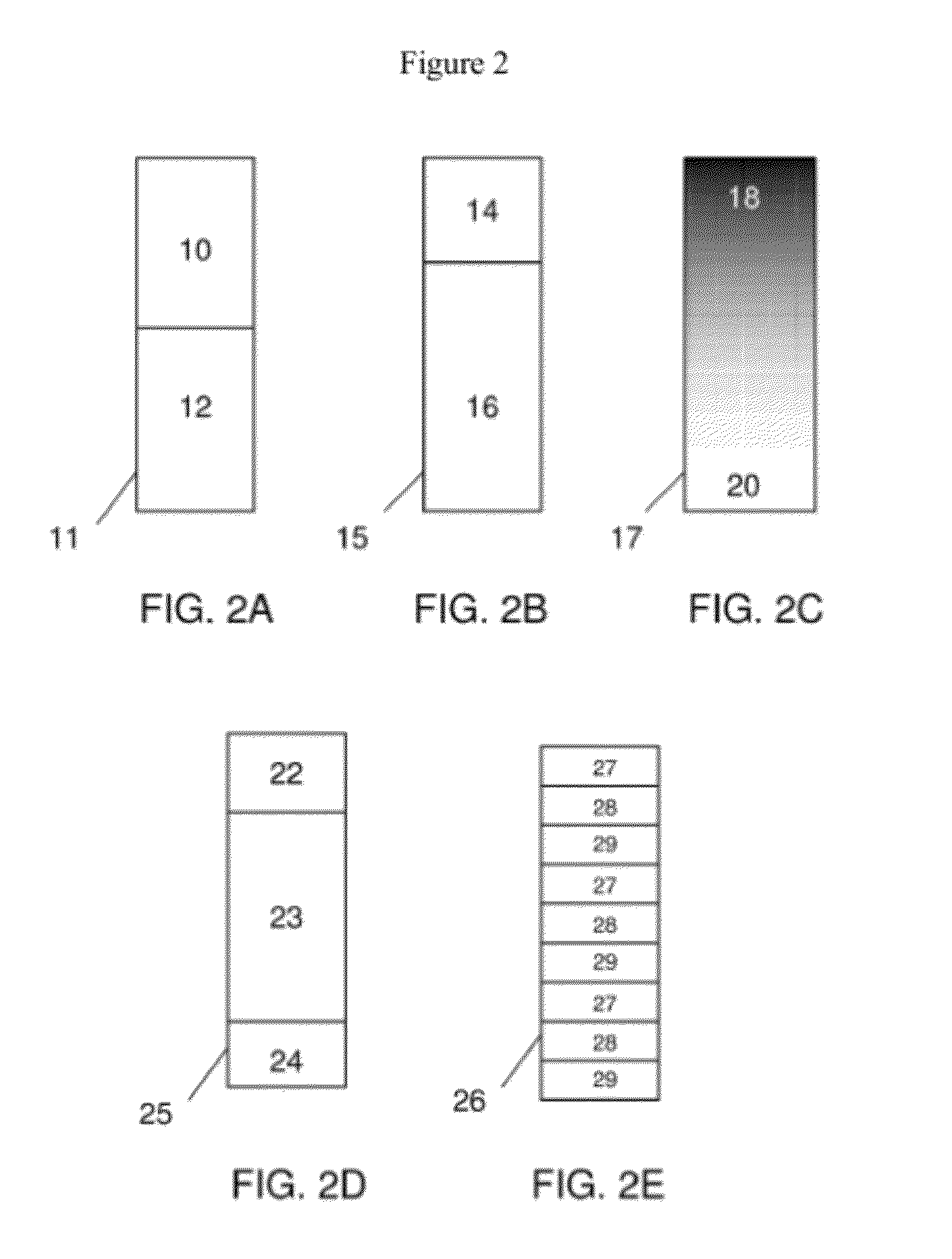Nanostructures, Systems, and Methods for Photocatalysis
a photocatalysis and nanostructure technology, applied in the field of nanostructures and, can solve the problems of low efficiency of systems, light not readily causing each of these chemical reactions to occur,
- Summary
- Abstract
- Description
- Claims
- Application Information
AI Technical Summary
Problems solved by technology
Method used
Image
Examples
example 1
[0251]The following prophetic example describes photocatalytic production of hydrogen and oxygen gases from water using a colloidal suspension of p / n-doped nanowires or nanorods. The nanowires are comprised of at least one semiconductor material, such that a p / n-junction is formed within the nanowires or nanorods. Upon exposure to electromagnetic radiation, excited electrons travel to one end of the nanowires or nanorod and the corresponding electron hole travels to the other end.
[0252]In this example, an iron oxide employed as the semiconductor. Iron oxide semiconductor material is generally stable to corrosion under the conditions for water splitting. In addition, the band positions and band gap of a p / n-junction of an iron oxide is appropriate for (1) efficient absorption of visible light, and (2) the production of hydrogen and oxygen gas from water (e.g., see Leygraf et al., J. Catalysis 1982, 78, 341-351; Turner et al., J. Electrochem Soc. 1984, 131, 1777-1783). The p-type and ...
example 2
[0255]The following prophetic example describes photocatalytic production of hydrogen and oxygen gases from water using a colloidal suspension of dye-sensitized nanoparticles. Most of the photocatalyst materials explored to date are comprised of metal oxide semiconductors having bandgaps of 3 eV or larger. These materials have proven to be excellent photocatalysts for water oxidation, however their poor absorption of visible light limits the overall efficiency for solar energy conversion. Photoactive dye molecules may be chemically adsorbed to the surface of wide bandgap, metal oxide particles that have been loaded with catalysts for the hydrogen evolution reaction (HER). In this scheme, excitation of the dye molecule promotes the transfer of an electron from the dye to the particle. The electron resides in the semiconductor conduction band, allowing transport of the electron to the hydrogen evolution catalyst. The corresponding electron hole remains on the dye, where it is later co...
PUM
| Property | Measurement | Unit |
|---|---|---|
| diameters | aaaaa | aaaaa |
| transmittance | aaaaa | aaaaa |
| transmittance | aaaaa | aaaaa |
Abstract
Description
Claims
Application Information
 Login to View More
Login to View More - R&D
- Intellectual Property
- Life Sciences
- Materials
- Tech Scout
- Unparalleled Data Quality
- Higher Quality Content
- 60% Fewer Hallucinations
Browse by: Latest US Patents, China's latest patents, Technical Efficacy Thesaurus, Application Domain, Technology Topic, Popular Technical Reports.
© 2025 PatSnap. All rights reserved.Legal|Privacy policy|Modern Slavery Act Transparency Statement|Sitemap|About US| Contact US: help@patsnap.com



